Best gaming laptop in 2022 (RTX 3080, 300HZ, 144Hz, 4K, QHD, HD)
We hand pick the best budget, mid-range, high refresh rate, 4K, and 1440p gaming laptops
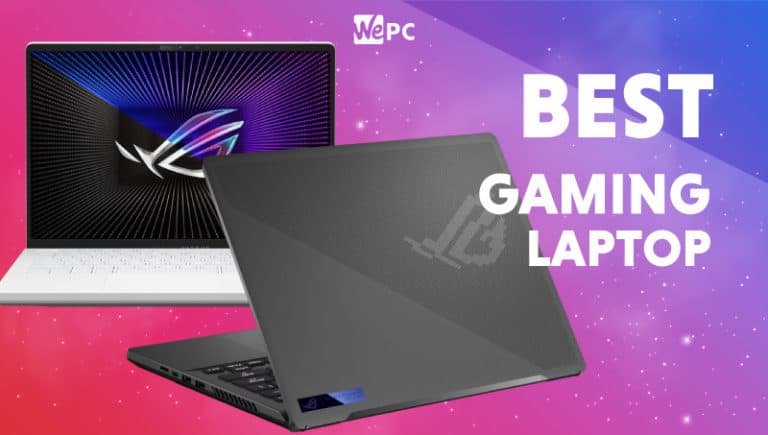
If you’re looking for the best gaming laptop in 2022, look no further. Gaming laptops are becoming increasingly popular in today’s market, and naturally, everyone wants to know what the best gaming laptop is.
With the best Black Friday gaming laptop deals rolling in, now has never been a better time to go for one, but you’ll want to make sure you know what you’re getting for the price, as performance and specs can vary vastly…
Some of the best gaming laptops under $2500 pack the latest GPUs, highest resolution displays, with super high refresh rates, and will likely feature super-advanced cooling systems too.
When it comes to the best gaming laptops under $1500, you’ll find more ‘mid range’ machines that will be great for most people, but may not have the very latest hardware.
And then there are some of the best gaming laptops under $500, which can run some of the most popular games well, but may struggle with anything more graphically demanding.
There are various contenders for this most prestigious of titles, and we have picked five of the very best to match the needs of every price range and consumer: ranging from a budget-friendly 1080p 144Hz laptop, to competitive 300Hz gaming machines, and premium 4K 120Hz models.
Laptop deals are live! Get huge savings on gaming laptops on Best Buy, the Lenovo Store, HP or Amazon in 2022, including:
- Legion 7i Gen 7 – 16” WQHD+ 165Hz, Intel i7-12800HX, RTX 3070 Ti, 16GB RAM, 1TB SSD – was
$2,729.99now $2,149.99 - Legion 5i Pro Gen 7 – 16” WQHD+ 165Hz, Intel i7-12700H, RTX 3070 Ti, 16GB RAM, 2TB SSD – was
$2,469.99now $1,759.99 - Legion 5i Pro Gen 7 – 16” WQHD+ 165Hz, Intel i7-12700H, RTX 3070, 16GB RAM, 2TB SSD – was
$2,169.99now $1,699.99 - Legion 5 Pro Gen 7 – 1600p, AMD Ryzen 7 6800H, RTX 3070 Ti, 32GB RAM, 2TB SSD – was $2,429.99 now $1,819.99
- Legion 5 Pro Gen 7 – 1600p, AMD Ryzen 7 6800H, RTX 3060, 16GB RAM, 2TB SSD – was $1,999.99 now $1,529.99
- Legion 5 Gen 7 – FHD AMD Ryzen 5 6600H, RTX 3060, 16GB RAM, 512GB SSD – was $1,529.99 now $1,219.99
- Legion 5 Gen 7 – FHD AMD Ryzen 7 6800H, RTX 3060, 16GB RAM, 1TB SSD – was $1,909.99 now $1,449.99
- Legion 5 Gen 7 – FHD AMD Ryzen 5 6600H RTX 3050Ti, 8GB, 256GB SSD – was $1,379.99 now $1,103.99
- HP Pavilion, Intel Core i5, GTX 1660 Ti –
$999.99699.99 - MSI GL75 Leopard, Intel Core i7-10750H, GTX 1660 Ti (renewed) –
$1,249.99999.66 - HP OMEN Laptop 15, AMD Ryzen 5, RTX 3060 –
$1,299.991,079.99 - ASUS ROG Zephyrus, AMD Ryzen 9, RTX 3070 –
$1,849.991,479.99 - GIGABYTE AORUS 15P XD, Intel Core i7, RTX 3070 –
$1,999.991,399.99 - MSI GP66 Leopard, Intel Core 17-11800H, RTX 3070 –
$1,899.991,549.99 - Alienware m15 R4, Intel Core i7, RTX 3070 –
$2,099.991,679.99 - MSI GE66 Raider, Intel Core i7-11800H, RTX 3070 –
$2,299.992,099.99 - GIGABYTE AORUS 15P YD, Intel Core i7, RTX 3080 –
$2,399.992,199.99 - MSI GS66 Stealth, Intel Core i7-11800H, RTX 3080 –
$2,899.992,299.00 - Razer Blade 14, AMD Ryzen 9, RTX 3080 –
$2,799.992,399.99 - MSI Raider GE66, Intel Core i9-12900HK, RTX 3070 Ti –
$2,899.992,699.99 - MSI Raider GE66 4K, Intel Core i9-11980HK, RTX 3080 –
$3,499.993,219.97
The best gaming laptop vs the best laptop
What separates a “gaming laptop” from just a laptop is not always a clear-cut line (it may shock you to learn it’s got very little to do with RGB). The first basic requirement is that it has to have the graphics card and CPU power to run games at a respectable Frames Per Second: 100 FPS+ as a minimum for competitive, fast-paced games and around 60 FPS+ for slower, story-based games being the general rule of thumb. All of the below laptops are capable of producing this level of performance on the latest games, though of course, this may require the video settings of the games in question to be turned down for the cheaper, budget entries on this list.
High refresh rates: a 120Hz laptop, 144Hz laptop, or higher for gaming?
The second most important consideration for a gaming laptop is that the display of the laptop has a fast enough refresh rate that the gamer can actually experience gameplay at the FPS speed (e.g. 120FPS requires at least a 120Hz display). Each of the laptops listed here has a frequency of at least 120Hz – which most would consider the requirement of a gaming display. The 144Hz laptop display is probably the most ideal for the majority of gamers, though those interested in fast-paced competitive online shooters may want to prioritize a higher refresh rate. Bear in mind though that you get diminishing returns in the subjective experience the higher you go: the difference between a 144Hz and a 240Hz laptop will definitely not be as pronounced as between a 60Hz and 144Hz laptop, despite the bigger difference in Hz. Additionally, if your laptop isn’t powerful enough to generate sufficient FPS at your desired graphical settings, then having a high hz laptop is relatively pointless.
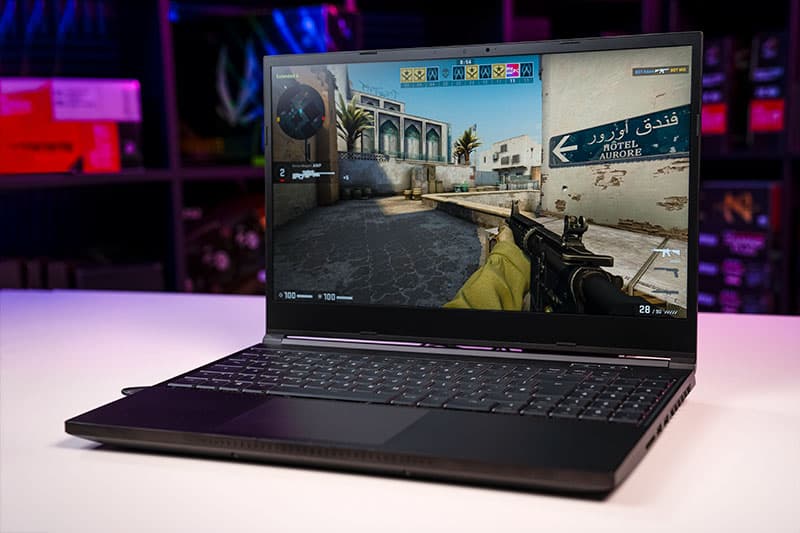
Which gaming laptop is right for you?
We have tried to organize our recommendations into different categories which we think reflect the needs of each type of buyer on the lookout for a gaming laptop, from the best 4K gaming laptop to the best laptop for competitive gaming, from powerful desktop replacements to portable 14-inch machines. Each of the following laptops is the best within their niche, as at the time of writing. They all come from well-known brands and each has respectable build quality.
Even if you’re confident around computers, we’d encourage you to have a quick scan of our Things To Consider When Buying A Gaming Laptop section below before you dive into the individual reviews, which will give you further information.
Our Top Picks


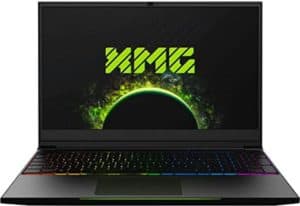

Things to Consider When Buying Gaming Laptops
An extensive guide to the considerations you should bear in mind when trying to find the best gaming laptop for your needs can be found on our ‘What To Look For In A Gaming Laptop’ page, however below are the main things you should think about before deciding which is the best gaming laptop for you to buy.
Gaming Laptops Are Expensive
The engineering required to cram the power of a desktop gaming PC into a thin, portable laptop is impressive but it’s also not cheap. You have to always bear in mind that the cash per performance of a laptop, in terms of its raw gaming power, is always going to be substantially less than with a desktop computer, because what you’re also paying for is the portability. No laptop on this page costs below $1,000, including our “Best Budget Gaming Laptop”, as, although cheaper laptops are available, we cannot honestly recommend them as being the best in their niche in terms of the level of gaming experience they provide.
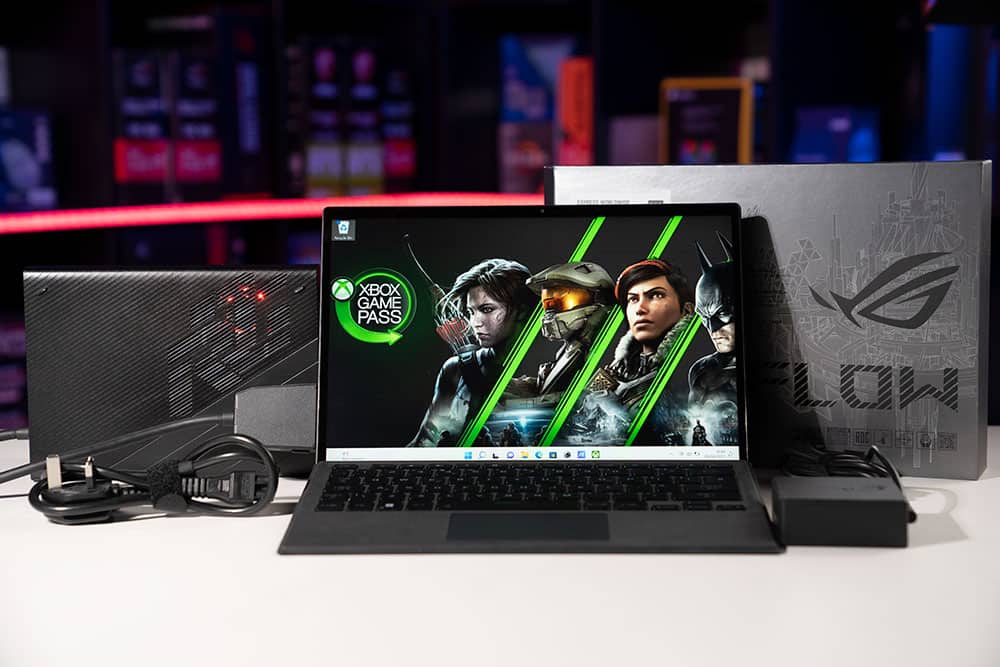
Make Sure You Get The Right Model
As is also found with monitors, there are usually many variations and configurations of the same model of laptop that are advertised with the same name but have different specs. Often Amazon has the different configurations underneath the same listing (assuming they are in stock and not greyed out), which can be manually selected. Again as with monitors, if a precise code is available signifying the specific configuration you want you should check for this; often however this is not available, so making sure each and every specification is correct before you buy is very important. A big price difference may indicate you’re buying something different!
1080p vs 1440p Gaming Laptops
Whilst 1080p is still king when it comes to fast-paced online competitive shooters and the like, 1440p is on the way to becoming the new standard display resolution for games where squeezing every last frame is less paramount than having a visually immersive experience. For anything below a 17 inch screen however, we’d say the benefit you get for resolutions above 1080p is not massive: its noticeable, but potentially not worth the money. Remember: higher resolutions mean less FPS output from the same hardware, so if FPS is your number one priority, consider sticking to 1080p on a 15” screen. For everyone else, assuming you can afford it, 1440p on a 17” screen is a great option.
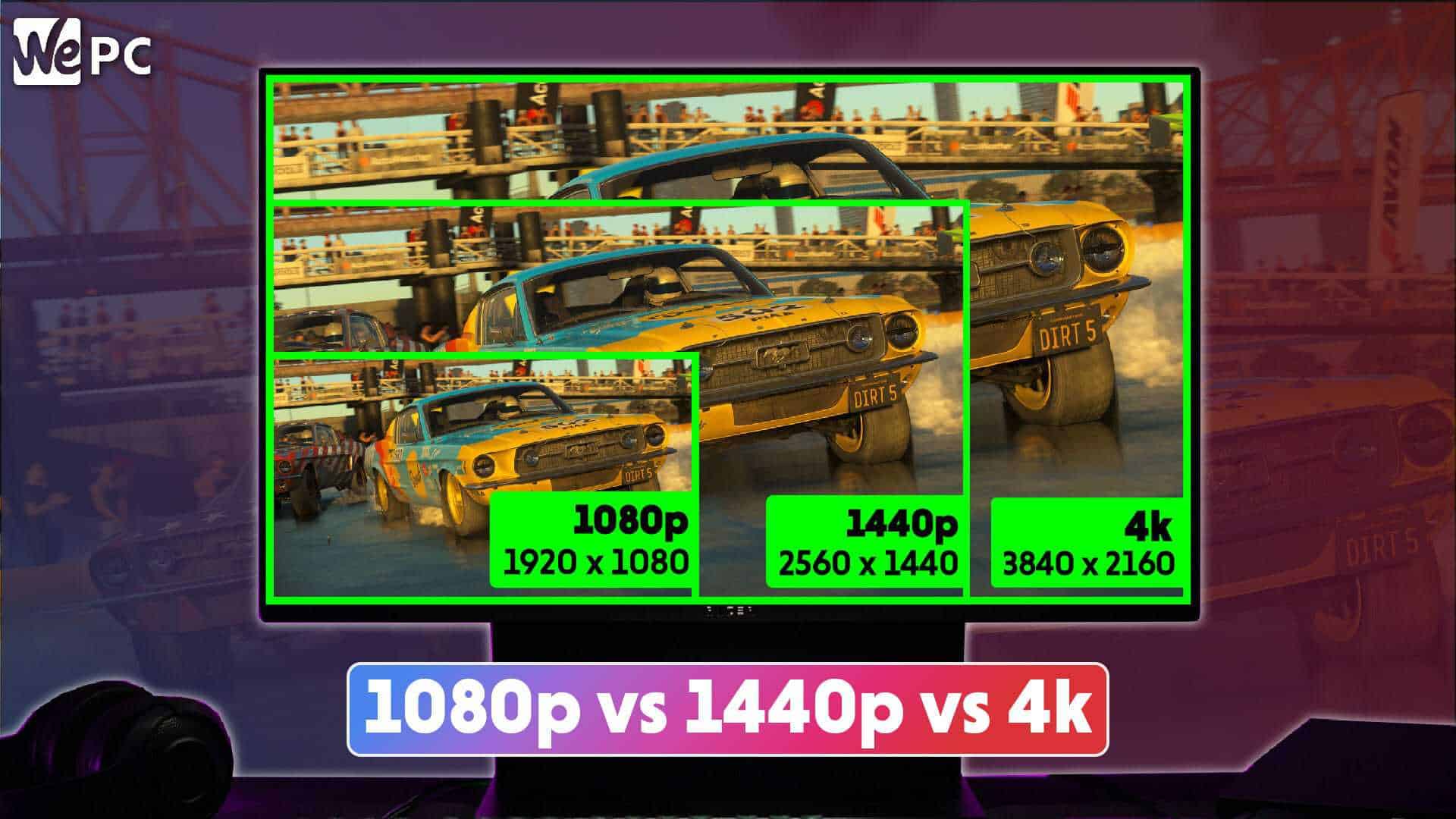
4K Gaming Laptops
All of the above points on 1440p resolution apply even more so to 4K gaming laptops. There is little point getting a 15” 4K display, unless you have specific needs for such resolutions based on visual design and other workstation uses or you just have money to burn. Even at 17” 4K is somewhat of an extravagance, and one has to consider the fact that playing demanding games at 4K resolution on even the most high-end laptop on Ultra settings is never going to get you an acceptable FPS: the technology simply hasn’t been developed yet to make this feasible in a laptop. Nevertheless, 4K gaming at lower than highest settings or on less demanding games is feasible, and you can always tweak the resolution down on those games which cannot handle it. Additionally, the non-gaming benefits of having a lush 4K screen for watching films and/or workstation use still apply – you will definitely notice a difference.
Noise Levels And Cooling In Gaming Laptops
If you are playing a game on a laptop, it’s invariably going to be noisy, unless the game is not very demanding. Higher performance components means more heat is generated, and this heat must be expelled. The difference therefore becomes one of degrees of noise when playing games, and this is generally much of a muchness. The bigger differentiator therefore tends to be how loud gaming laptops are when not gaming – i.e. how useful it is for doing other tasks without becoming irritating.
Similarly, heat being expelled rather than retained in the laptop is a good thing, even if it means that most of the best gaming laptops won’t be suited to on-lap play. The biggest concern when trying to decide between the best gaming laptops is how hot they get under your hands whilst you’re playing.
How long do gaming laptops last?
Unfortunately, there’s no straightforward answer to this. You should definitely expect to get a minimum of three years out of your gaming laptop, but if I’d splashed out the significant amount of money required to buy one and that’s how long it lasted, I would be less than pleased. After five years on most high-end gaming laptops you may start to notice performance drops as the internal components degrade, but it tends to be the battery which goes first, so replacing this can get another couple of years out of your machine, even if it’s not hitting quite as hard as it used to.
Ultimately, the longevity of a laptop depends upon how the power supply and cooling of the laptop are constructed, the quality of the battery, and how you treat it. It’s very difficult to tell in advance when reviewing a laptop how long the battery will last, unless you can draw off other examples, perhaps from the same brand, that have known issues in this department, so this can be a bit of a lottery. Internal temperature benchmarks (which we now do in all of our in-depth reviews) will give you an idea how effective the internal cooling is and how likely the CPU and GPU are to go the distance. The one thing you can affect the most though is how you treat your beast – if you have voltage and fan controls for your machine, consider keeping the former low and the latter as high as they can be where possible. If you don’t need to push things to the max, then don’t. Investing in a laptop cooling pad can also help your laptop last longer and improve performance in games.

The Best gaming laptops


In-depth Review



- great FPS performance in games
- superb content rendering performance
- excellent response time
- good peak brightness & contrast
- nice optomechanical keyboard & trackpad
- raised keyboard improves cooling
- slimline and portable for such a powerful laptop
- detailed fan controls in the software
- expensive
- no MUX switch
- color gamut not sufficient for sRGB color work
- no G-Sync or FreeSync
- webcam and microphone could be better
The ASUS Zephyrus S17 is a hugely powerful 4K laptop with a nice big 17-inch display so you can actually appreciate the high resolution of the screen. Many laptops of this size make great desktop replacements, and we’d certainly class the S17 as one of these. Unlike the majority of 4K laptops it has a maximum refresh rate of 120Hz, meaning it’s fast enough that you can actually enjoy competitive gaming on it, though we’d usually recommend turning the resolution down in-game to 1440p or 1080p to enjoy FPS capable of reaching this ceiling in the latest AAA games. The impressive average grey-to-grey response time of 5ms (once you enable Overdrive), means you shouldn’t be able to detect any ghosting whatsoever at this refresh rate. We would like to have seen FreeSync or G-Sync supported by the machine to round things off nicely, but unfortunately, you can’t have everything.
Similarly, we would have liked to have seen a MUX Switch to give an extra performance boost in-game, as we’re increasingly seeing in high-end gaming laptops, however, the Zephyrus S17 still hits hard without it (you can also still connect to an external monitor if you really want that FPS boost). The maximum specced version has an Nvidia GeForce RTX 3080 (16GB) graphics card with the maximum TGP of 140W (with Dynamic Boost), which is the most powerful of its kind, and mops the floor with lower-powered RTX 3080 laptops. The Intel Core i9-11900K CPU is also the most powerful 11th gen Intel processor available, and has great multi-core and single-core performance, should you wish to use the laptop for any form of rendering or 3D modeling workflows alongside your gaming.
Unfortunately, the display’s color replication does fall a bit short of making this a suitable workstation machine for color-accurate work, as it only reaches to 95% of the sRGB space. Still, this is plenty good enough for gaming on, as is the impressive peak brightness and respectable contrast.
The raisable keyboard design of the Zephyrus S17 is supposed to both improve the typing angle for your hands (which takes a bit of getting used to but is effective) and also allows greater airflow to improve cooling and reduce thermal throttling on the performance of the core components. This latter feature is apparently reasonably effective, and it’s good to see increasing ingenuity in laptop design. The standard of both the optomechanical keyboard and the trackpad is also good.
Considering the size of this gaming laptop, and the power of its core components, it is remarkably slim and lightweight: coming in at around 6.21lb / 2.82kg, though this is without the typically hefty power brick. Battery life is respectable if not amazing at around 5 hours of non-gaming usage. The onboard software is good, giving nice granular control of fan speed. The webcam and mic aren’t of the best quality, though not the worst we’ve seen either.
Ultimately the biggest reason you might not want to buy this laptop is the cost, though if you can afford it, this is both the best 4K gaming laptop money can buy AND a very powerful rendering machine.

- unbeatable gaming performance
- highest TGP graphics card options in a laptop
- MUX Switch
- good color replication, contrast & brightness
- good Value
- great optomechanical keyboard & trackpad
- superb onboard software
- SD card reader
- fairly light
- no G-Sync
- speakers & speaker positioning could be better
- webcam & mic could be better
- Heavy power adapter
- bland aesthetic
Although the version of the laptop design we have listed here is the 2022 model (the E22 if you’re buying XMG) which comes with the latest Ti graphics cards, a 240Hz refresh rate QHD display, and DDR5 memory support; the previous XMG Neo 15 E21 / Eluktronics MECH-15 G3 with its 120Hz QHD display and DDR4 RAM is also an equally valid pick if you want to opt for the RTX 3070 version and save some money. In fact, this is arguably the best value version, if you don’t mind being capped to an effective 120FPS.
The newer RTX 3070 Ti version, however, with its supremely powerful 150W TGP, is capable of competing with the RTX 3080 version in many games, and also comes with support for a unique external OASIS liquid cooling system, should you want to spend an extra bit of cash on it. The RTX 3080 Ti version is more powerful still and is the option that will make the most use out of having it’s thermal throttling lifted by such a system.
Whichever option you pick, you’ll have industry-beating performance with this series of laptops. The liquid cooling is optional, and not required to enjoy superb performance, and this is the case with many of the other options offered: up to a whopping 4TB of SSD storage and 64GB of RAM, should you desire. You also get plenty of ports, including an SD card reader, a USB-C / Thunderbolt port if you buy the E22, and a great quality trackpad, and a full-size mechanical-like optomechanical keyboard, which is great for either gaming or typing on.
The 1440p 165Hz display is as good as you’d need for a gaming laptop – with solid response times (around 7ms gray to gray), a great contrast ratio and superb color accuracy. At 98% sRGB color gamut the laptop won’t quite do for professional color grading, but definitely suffices for gaming.
In terms of the downsides, like many gaming laptops the speakers aren’t great. The laptop only comes with Freesync rather than G-sync, which is a feature we miss, and the fans on the machine get fairly loud under load, so we’d advise wearing headphones. Aesthetically the machine is pretty uninspired, and though there’s an RGB strip across the bottom it’s pretty feeble to say the least.
Battery life depends on the specifications of the version you go with. Although the version listed here comes with the Intel Core-i7 10875H, if you can get hold of the AMD 5900HX for a good price we would heartily recommend it, as the battery life on that model is substantially better, not to mention the CPU performance also being superior.
All things considered, the Eluktronics MECH-15 G3 is one of the best value, high-end gaming laptops you’re likely to come across.


- AMD Ryzen 9 5900HX is a great CPU
- RTX 3080 in a compact gaming laptop
- 1440p display
- Great color replication
- Great build quality
- Thin and lightweight
- FreeSync
- Good response times for a smaller laptop
- Only 16GB RAM which cannot be upgraded
- Expensive
- Low TGP RTX 3080 GPU
- Only 8GB VRAM RTX 3080
- Fairly loud fans
Unless portability is your number one priority we wouldn’t normally suggest going with a 14-inch gaming laptop, as the loss of immersion in your games brought about by the smaller display is too detrimental. Similarly, a 1440p 14” display, like that the Razer Blade 14 comes with, seems particularly extravagant: the financial cost and FPS drop of the extra resolution just isn’t worth it on such a small screen, where 1080p will do just fine. All that being said, if you have your heart set on a gaming machine of this size, the Razer Blade 14 is well ahead of the competition, and is very impressive from a technical standpoint, just how much power Razer has crammed into such a thin machine.
The AMD Ryzen 9 5900HX CPU (the first ever instance of an AMD CPU in a Razer laptop) is the best in the business. The RTX 3080 is only an 8GB VRAM version (compared to the other 16GB VRAM ones listed here) and has a fairly low 90-100W TGP, purely due to the restrictions of the thin body, so you can’t expect performance akin to other, higher powered RTX 3080s, but it still does the job, and is ahead of any other gaming laptop of this size. You can still expect to get around 90 – 115 FPS in demanding games on the very highest settings if you turn down the resolution to 1080p.
The screen of the Razer Blade 14 has sRGB coverage of around 99.8% and Adobe RGB of approximately 83%, so it’s suitable for light color work in the sRGB space (something the higher 1440p resolution will help with for detailed graphics design work). The color replication is definitely great for gaming and the high contrast ratio and peak brightness create a vibrant, crisp image. Gray-to-gray response time is always slower in 14” machines, but the Razer Blade 14 again comes number one in this department, with a real, effective 9ms response time. The 165Hz refresh rate with FreeSync support also does the job for past-paced gaming.
In terms of weight, the Razer Blade 14 isn’t that light (though it’s not heavy either), but ergonomically it’s a marvel and can fit easily in even the smallest of briefcases, backpacks or what have you. Build quality is top of the line with a durable aluminum chassis that feels nice to the touch. Everything considered, this is the best 14-inch gaming laptop in the business.


- AMD Radeon RX 6800M GPU
- AMD Ryzen 9 5900HX CPU
- 3ms response time
- 300Hz display option
- terrific value
- great battery life
- respectable speakers
- slow stock RAM bottlenecks performance
- only 512GB SSD
- no webcam
- no SD card reader
- AMD GPU lacks Ray Tracing and DLSS
The ASUS ROG STRIX G15 Advantage Edition is the first big release in AMD’s Advantage series of gaming laptops, the design of which are all overseen by AMD to ensure that they meet certain minimum standards of efficiency and gaming performance. The big draw of this laptop is the area that counts of the most when gaming – the CPU and GPU combo. The Ryzen 9 5900HX CPU is the most powerful AMD processor you will get in any gaming laptop and the AMD Radeon RX 6800M graphics card packs a mighty punch, especially for this price – equivalent to an RTX 3070 albeit without the DLSS support and top-level Ray-Tracing. Indeed the price is probably the best thing about this beastly compact gaming machine – you won’t find better performance per price on almost any budget.
Realistically, it’s unlikely you will get close to anything like 300 FPS on any gaming laptop, unless you’re playing a particularly undemanding title on the lower settings, but the maximum 300Hz refresh rate of this display is still a great feature for the price, knowing that you’ll virtually never be capped in FPS terms by the display itself. The 5ms actual grey-to-grey response time is solid, the claimed 3ms being unrealistic as with any gaming laptop’s marketing in this area.
Color replication, peak brightness, and contrast aren’t up there with the likes of Razer and Alienware laptop displays, but they’re all respectable on this machine and certainly good enough for a gaming laptop. The thin bezels on every side but the bottom make the display enjoyable to look at, and we’re fans of the overall aesthetic of this machine with its red details and WASD keys.
The ASUS ROG STRIX G15 Advantage Edition is by no means the lightest laptop in its price range, but this definitely a worthy trade-off for the gaming performance and also the terrific battery life (for a gaming laptop) of around 9 hours when doing non-intensive tasks on the battery saver settings. Audio on this laptop is also certainly above average for a gaming laptop – not as good as a MacBook but certainly suitable for watching YouTube, Netflix etc.
Drawbacks of the machine are primarily the 512GB SSD size (if you go for the entry-level price) but also the low clock speed of the 16GB stock RAM – which has been shown to bottleneck gaming performance substantially (by at least 10% in most games). The first however can be upgraded with a bigger hard drive at the point of purchase, the latter you can do yourself without too much trouble, really unlocking the FPS potential of this machine. Besides this there is no webcam on this laptop – which may put off those looking for a dual-use office machine, although cheap external laptops are easy to find. The lack of an SD card reader could be more of an issue though. Still, this is a superb value gaming laptop and we heartily recommend it.

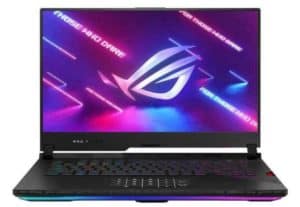
- AMD Ryzen 9 5900X / 5900HX CPU
- 1440p display
- Great color replication
- 32GB RAM
- Good value
- Freesync
- No webcam
- No G-Sync
- Array of ports and sockets could be better
- No SD card reader
This 1080p ASUS ROG STRIX SCAR 15 is a superb choice for competitive gamers on the move. The 3.8ms real grey-to-grey response time (i.e. based on third-party testing and not just what the manufacturer quotes) is a fairly rare feature for a laptop display, which usually don’t compete favorably with full-sized monitors in this department. A 300Hz refresh rate is as fast as you will feasibly need, even in competitive gaming; and is only likely to cap your effective FPS performance slightly on something like CS:GO on the lowest graphical settings. The laptop, unfortunately, does not have G-Sync, but it does support Freesync to help minimize screen tearing.
In terms of color replication, contrast and brightness, the ROG Strix Scar 15 ticks all the boxes for a gaming laptop, coming in at around 98% sRGB and 73% Adobe RGB: not up there with the best of the best but definitely still everything a gamer needs. If you’re after a laptop that can do color grading work, this will suffice in a pinch, though there are admittedly better options available for the price.
The ROG STRIX SCAR 15 comes with various different spec options, including up to 64GB of RAM and a 2x 2TB SSD option, though 32GB of RAM with 2TB SSD should be more than sufficient. The Nvidia RTX 3080 GPU setup with AMD Ryzen 9 5900X CPU is the version we’d suggest, though you can splash out on a 5900HX processor if, for example, you’re planning on also using it for creative workstation tasks. The RTX 3080 in this machine isn’t the most powerful on this list in terms of TGP, but it’s still a powerful graphics card.
Whilst most of the non-gaming related extras such as webcam and SD card reader have been stripped back to save on cost, including Displayport and Thunderbolt support (only HDMI 2.0b is present here), you get everything else you could want in this gaming laptop.
Best gaming laptops frequently asked questions
Is a gaming laptop or PC better?
Gaming laptops will never match desktop gaming PCs in terms of power for price, as discussed above. Additionally, there is a maximum limit imposed on the FPS a gaming laptop can produce due to restrictions of Wattage and cooling, compared to a desktop PC. Clearly though, a desktop cannot compare to a laptop when it comes to portability.
Do gaming laptops overheat?
Yes. Reducing overheating is one of the biggest engineering challenges by manufacturers of gaming laptops. The thin chassis of a laptop is not conducive to airflow from fans or spacious enough for other cooling solutions which can be used in desktop rigs, and gaming-focused machines use more powerful components than ordinary laptops, thereby leading to greater heat output. Additionally, it is difficult to cool the internal components whilst also minimizing the heat expelled onto a user’s hands or lap.
Are gaming laptops good for everyday use?
Gaming laptops require much more CPU and GPU power than is needed for the average day-to-day functionality, so in most cases they will not have any issues in doing your typical day-to-day tasks. However, there are two areas which may sometimes be sacrificed in favor of gaming power that are more crucial to normal use than they are to gaming: that is RAM and storage space. Web browsers are very RAM-hungry, and today we would typically advise making sure your laptop has 16GB of RAM. For SSDs or HDDs you’ll ideally want at least 1TB of space to save your files on, though you can get by with less.
Do gaming laptops last longer than normal laptops?
Gaming laptops, due to their more powerful central components, typically have a much lower battery life than conventional laptops. Furthermore, the longevity of the laptop itself may be somewhat diminished due to the greater heat stresses that high-end components are put under during gaming sessions, and the difficulty cooling them within a laptop chassis. However, both gaming laptops and regular laptops should last for years if you take care of them, so this latter difference shouldn’t really be a factor for your average consumer.
Some Of Our Other Articles On The Best Gaming Laptops
- XPG Xenia 15 RTX 2070 Max-Q Review
- Razer Blade Pro 17 1080p 360Hz (2021) Review
- Razer Blade 14 1440p 165Hz AMD Review
- XMG Neo 15 E21 / Eluktronics MECH-15 G3 (2021)
‘Best of’ brand guides
- Acer gaming laptop
- Alienware gaming laptop
- ASUS gaming laptop
- Dell gaming laptop
- HP gaming laptop
- Lenovo gaming laptop
- MSI gaming laptop
- Razer gaming laptop
- RTX 3080 Ti laptop
- RTX 3080 laptop
- RTX 3070 Ti laptop
- RTX 3070 laptop
- RTX 3060 laptop
- RTX 3050 & 3050 Ti laptop
‘Best of’ price guides
- The best gaming laptops under $500
- The best gaming laptops under $600
- The best gaming laptops under $700
- The best gaming laptops under $800
- The best gaming laptops under $1,000
- The best gaming laptops under $1,500
- The best gaming laptops under $2,000
- The best gaming laptops under $2,500
Final Word
So this has been our guide to the best gaming laptop in 2022. We hope it has been a stimulating read and has helped you come to a decision about which laptop is right for you. Other laptop guides linked to specific price points can be found in the recommended articles on this page, whether you be looking for 4K, 1440p, or 1080p displays on 360Hz, 165Hz, and 144Hz laptops or other high refresh rates.
If you want more power for a lower cost than gaming laptops can provide, check out our guides on high-end desktop builds for under $1,500 and also the best pre-built PC for under $1,500.
If there are any specific laptops you would like to see reviewed, please let us know in a comment below.
WePC is reader-supported. When you buy through links on our site, we may earn an affiliate commission. Learn more










